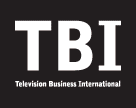- Board of Governors
- Board of Directors
- Privacy Policy
- Contact Us
- Archive
What Fact-Checking Standards Actually Mean
When you come across headlines claiming to set the record straight, fact-checking standards might seem like a background formality. But these rules shape what gets called true or false—and influence far more than you’d think, from the news you trust to the conversations you have. If you’ve ever wondered who draws the lines and how those decisions ripple through what you see every day, there’s more beneath the surface.
The Evolution of Fact-Checking
During the mid-19th century, the rise of sensationalist newspapers prompted a response in the form of fact-checking to enhance media credibility. This was particularly evident with the establishment of the Associated Press in 1851, which aimed to provide reliable news services.
As misinformation became more prevalent, journalism adopted more rigorous editorial processes. In the 1920s, Ralph Pulitzer advanced the practice by founding the Bureau of Accuracy and Fairness, which formalized fact-checking protocols.
Over time, various magazines established dedicated teams focused on meticulous verification of information, thereby distinguishing editorial fact-checking from political fact-checking that developed later.
Although the roots of fact-checking were historically associated with “women’s work,” rigorous verification remains essential in safeguarding audiences and maintaining the integrity of the media.
How Misinformation Is Identified
The process of identifying misinformation has evolved significantly within modern media environments, utilizing both technological tools and human expertise.
Technology plays a critical role in detecting potential misinformation by monitoring various indicators, such as user-generated flags for “false information,” anomalous comment behaviors, or unusual spikes in skepticism toward particular content.
Once potential misinformation is identified, fact-checkers engage in the verification process. They utilize established fact-checking resources, public records, and credible media sources to assess the accuracy of the claims made.
Content that's classified as False, Altered, or Partly False may be subject to reduced distribution and may display warnings to inform users of its status. Additionally, individuals who frequently share false information may experience further limitations that could impact their monetization capabilities and overall exposure on the platform.
This methodical
The Fact-Checking Review Process
When a piece of content is flagged for review, independent fact-checkers evaluate its accuracy based on established criteria.
These criteria include an assessment of the claims using public data, verified media sources, and documented guidelines that categorize information as False, Altered, Partly False, Missing Context, Satire, or True.
If a piece of content is classified as false or altered, its visibility is substantially reduced to limit the dissemination of misinformation.
Additionally, fact-checkers monitor repeat offenders to ensure compliance with factual standards.
This review process aims to maintain the integrity of information and protect users from potential misinformation online.
Setting and Applying Accuracy Ratings
The fact-checking process consists of a systematic approach, with the assignment of accuracy ratings being a crucial component in evaluating content.
Fact-checking organizations employ a standardized set of ratings—True, False, Altered, Partly False, Missing Context, and Satire—to convey their findings. Claims that receive a False or Altered rating often face reduced visibility on platforms to help mitigate the dissemination of misinformation.
These ratings are derived from a comprehensive review process that's independent of Meta and adheres to transparent standards established by certifying bodies such as the International Fact-Checking Network (IFCN).
Additionally, labels provide important context for understanding the accuracy of claims, with the exception of Satire or True ratings.
Evaluating Source Reliability
When evaluating the reliability of a source, it's essential to examine several factors. First, consider the author of the information; their qualifications and expertise in the relevant field contribute to the credibility of the content. Reliable sources typically have clearly identified authors with academic or professional backgrounds that establish their authority on the subject matter.
It is advisable to give precedence to primary sources, as they provide firsthand accounts or direct evidence, particularly in rapidly evolving areas where outdated information may lead to misconceptions.
Furthermore, it's important to look for any potential biases that could influence the presentation of information. Sources with undisclosed agendas can compromise accuracy and lead readers to erroneous conclusions.
Transparency is another critical characteristic of trustworthy sources. This includes properly cited references, the inclusion of diverse viewpoints, and the ability to correct errors when they arise.
Labeling and Reducing the Spread of Misinformation
Every day, substantial amounts of information are shared online, which has led platforms to implement strategies aimed at reducing the spread of misinformation.
One approach involves the use of clear labeling and a reduction in visibility for content identified as false or altered through fact-checking. When content is assessed as such, its reach is significantly diminished, resulting in fewer users encountering or sharing it.
Fact-checkers play a critical role by adding labels to posts that provide context, thereby helping users identify misinformation more effectively. Content that's categorized as Satire or True generally doesn't receive these labels to prevent potential confusion. Additionally, content deemed Partly False also experiences reduced visibility, albeit to a lesser extent.
Misleading advertisements are similarly restricted from being promoted on these platforms. Furthermore, accounts that repeatedly post misinformation face further consequences, including additional limitations on distribution and monetization.
These measures collectively aim to maintain the integrity of information shared online.
Addressing Persistent Spreaders of False Claims
Even with established fact-checking systems in place, certain users continue to disseminate false claims on social media platforms.
When individuals frequently share content that has been flagged as false, altered, or partly false, they may encounter heightened scrutiny regarding their sharing behavior. This can result in decreased visibility for their posts, and potential restrictions from monetization and advertising opportunities.
Platforms often implement monitoring mechanisms to identify patterns of repeated sharing of misleading content, which can limit user reach.
For instance, companies like Meta have policies in place that prohibit the promotion of content containing information that has been debunked, leading to further limitations on the ability to advertise such material.
These measures aim to address habitual spreaders of misinformation, ultimately contributing to a more reliable information landscape within online environments.
Navigating Sensitive and Complex Topics
Navigating sensitive and complex topics requires careful consideration and accurate communication. It's important to rely on facts derived from current, peer-reviewed research to ensure the dissemination of precise information and to mitigate the risk of spreading misinformation.
Personal experiences shouldn't be generalized or presented as universal truths; instead, claims should be supported by data, and any limitations should be acknowledged. Using qualified language can help promote a nuanced understanding of the issues at hand.
In areas such as nutrition or mental health, it's crucial to adhere to established standards and avoid oversimplification or generalization.
Clarity regarding sources is essential to foster trust and maintain transparency, thereby reducing the potential for misinformation when addressing complex or controversial subjects.
The Broader Effects of Fact-Checking on Public Discourse
As fact-checking becomes increasingly prevalent in public discourse, it significantly influences the way individuals interpret information and assess the credibility of various sources. The challenge of inaccurate content prompts audiences to reconsider its validity and the potential motivations behind its dissemination.
The implications of fact-checking extend beyond individual assessments; political leaders are held to higher standards of accountability, while citizens gain the agency to advocate for accurate information.
In political contexts, the presence of fact-checking can alter public perceptions, promoting transparency and reducing the spread of misinformation. This process not only corrects inaccuracies but also encourages individuals to critically evaluate information sources, ultimately contributing to a more informed public discourse.
The impact of fact-checking may vary based on the context in which it's applied, but it consistently reinforces the importance of evidence-based information in shaping societal dialogue.
Conclusion
By understanding fact-checking standards, you’re better equipped to spot credible information and challenge misleading claims. When you know how fact-checkers review sources, rate accuracy, and address misinformation, you can navigate the news landscape with confidence. Don’t underestimate your role—applying these standards empowers you to think critically and demand accountability from leaders and media alike. In a world filled with conflicting information, relying on clear fact-checking guidelines helps you make informed decisions every day.









